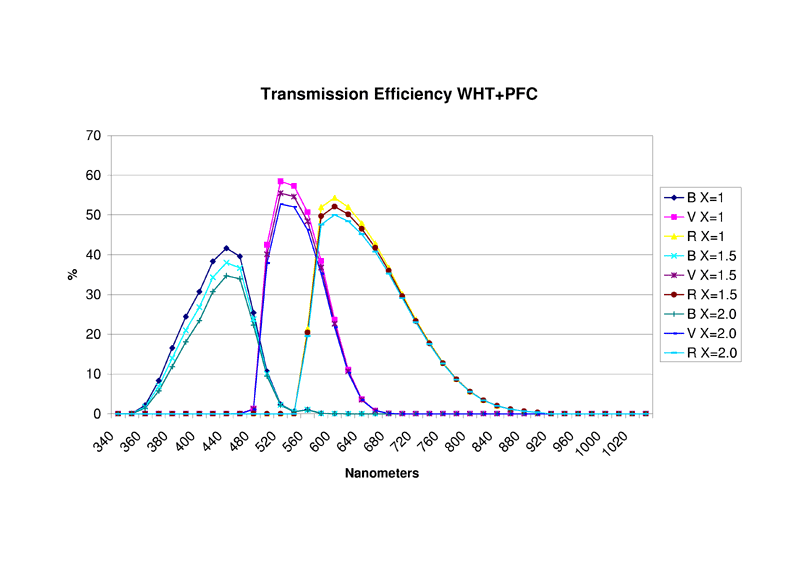 | |||
|
| Home > Public Information > Astronomical Images > Producing PR Images |
Producing PR ImagesOne of the best ways to promote our observatory is showing superb astronomical images obtained using the ING telescopes. For this reason we encourage observers to take good PR images. Full credit will be given to the authors of the images.
FOV: ~16x16 arcmin (9-arcsec gap), ~8x16 arcmin Pixel scale: 0.24"/pixel Image size: 4096*4100 (2050) pixels Filters: Broad- and narow-band imaging. Cosmetics: CCD2 better than CCD1. Best for: Faint objects. Relative Transmission Efficiency Factors:
|

|
FOV: 8.3 arcmin - circular Pixel scale: 0.25 arcsec/pixel Image size: ~1983×2002 pixels Filters: Broad- and narrow-band filters. UBVRIZ normally. Best for: Relatively small objects.
FOV: ~34 arcmin - irregular, with ~1 arcmin gaps, 11.4x22.5 arcmin Pixel scale: 0.33 arcsec/pixel Image size: ~6000×6000 pixels Filters: Broad- and narrow-band filters. Best for: Extended objects, narrow-band imaging.
If you obtain a nice reduced image, please contact the ING PR Officer (email at the bottom) and provide with the following information:
1: Observers who carried out the observations and the names of the people who reduced the data, if any. Please include email addresses. 2: Including identification numbers. 3: Including average seeing on each filter. 4: Including calibrations. If you already have got a nice image which you think can be part of our PR collections please don't hesitate to contact us. TIFF and DIN-A4 size at a resolution of 300 dpi are desireable. Images of Messier objects potentially useful for our collections found in the ING archive are (until roughly 2012): M2, M8, M10, M17, M23, M34, M39, M44, M49, M52, M59, M61, M67, M71, M72, M77, M78, M79, M80, M84, M85, M86, M88, M89, M91, M94, M102, M108, M110. These images could be de-archived, reduced and if the result isn't good enough then it can be added to the current lists of targets. To prepare a list of objects for any season:
|
| Top | Back |
|

